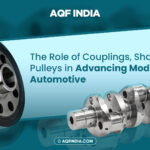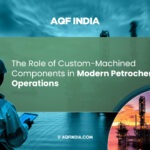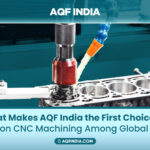Hydraulic systems power an extended spectrum of industries, including agriculture, off-highway equipment, the automobile industry and the oil and gas sector.
In response to increased standards and growing expectations, casting manufacturers in Coimbatore are implementing eco-friendly practices in their efforts to strike a balance between performance, durability and accountability for the environment.
Sustainable Pressures and Opportunities in Hydraulic Casting
With more than 50 years of expertise, AQF India positions itself as a precision component manufacturer committed to performance and environmentally sustainable value. Its SG, Grey Iron, HiSiMo castings are engineered for demanding environments and long service life, minimising waste and replacement cycles.
The demand for efficiency in hydraulic casting is impacted by a variety of overlapping elements, such as:
- Enforcement: More stringent policies for energy efficiency, emissions and recycled materials.
- Client Prerequisites: Traceability and lower lifecycle carbon footprints are sought by OEMs and international buyers.
- Technological Adoption: Eco-friendly manufacturing is now possible without sacrificing mechanical performance because of innovative materials and technologies.
Pivotal Trends in Sustainable Hydraulic Casting
Trend 1: Material Optimization & Reuse
- Preference for SG iron and Grey iron to deliver high strength-to-weight ratios and extended service life.
- To reduce landfill waste and the consumption of virgin sand, cast iron foundries in Coimbatore are placing an increasing emphasis on sand reclamation and green sand molding.
Trend 2: Energy Efficiency & Process Improvement
- Installation of furnaces with reduced energy consumption and improved melting/pouring cycles.
- Tracking in real time to continuously optimize processes.
Trend 3: Low-Emission Moulding & Binder Technologies
- Adoption of low-VOC and water-soluble binders for safer and cleaner production.
- Shift from synthetic baked binders to eco-friendly ‘green moulding’ approaches.
Trend 4: Evolutionary Consideration & Sustainability in Design
- Near-net-shape casting reduces waste and machining down the line.
- Incorporating life cycle assessment (LCA) into conclusions about procedures and materials.
How These Trends Can Be Implemented
Adoption Procedures in Practice
- To find inefficient regions, audit waste streams and materials.
- Adopt sustainable binder technologies by experimenting with inorganic or low-VOC alternatives.
- Upgrade energy systems with recuperators, insulation and efficient melting equipment.
- Optimise casting design using simulation tools for defect reduction and scrap minimisation.
- Pursue certifications and transparency to demonstrate compliance and build trust with OEMs.
The Business Case: Beyond Compliance
Sustainable casting is not only about meeting environmental standards, it also enhances competitiveness. Advantages include:
- Stronger reputation among OEMs, especially for a precision component manufacturer with global reach.
- Lower risks from disruptions in regulations and raw materials, particularly relevant for casting manufacturers in Coimbatore supplying export markets.
- Opportunities for differentiation among leading cast iron foundries in Coimbatore through eco-friendly innovation.
Conclusive Thoughts
As the demand for more environmentally friendly supply chains increases, hydraulic casting is becoming more sustainable. Manufacturers like AQF India emphasize sustainability as the cornerstone of production that is prepared for the future by implementing effective procedures, recyclable materials and cleaner designs.






